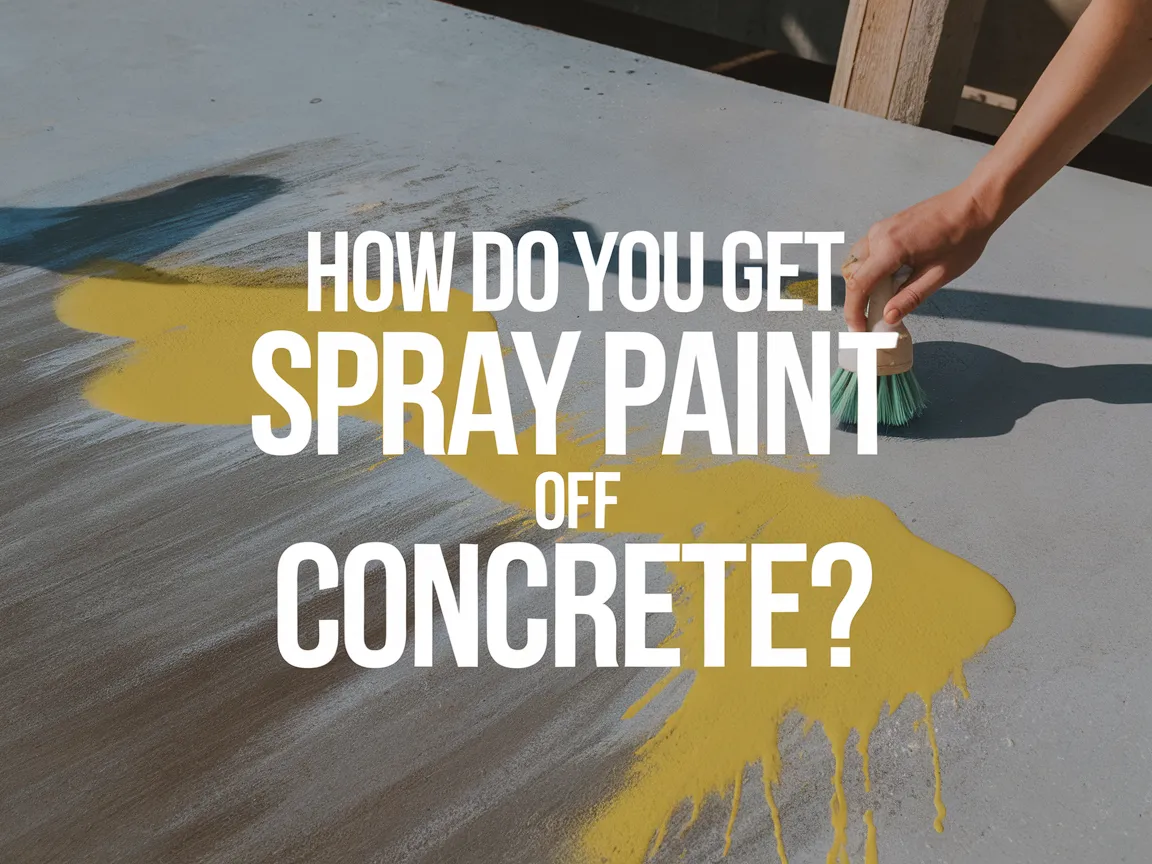Can You Paint Vinyl Doors?
Vinyl doors are sturdy doors made from a special kind of plastic. They’re like the superhero of doors—strong, colorful, and great for keeping the weather out!
So, can you paint vinyl doors? It’s super important to do it right, or you could mess up the door’s look or even its protection. I once tried painting a vinyl door without prepping it and ended up with a peeling mess!
In this article, I’ll cover essential prep steps before painting, a step-by-step guide, the best paint types, common problems, and creative ideas. You’ll learn how to tackle this project with fun tips and tricks for painting vinyl doors, vinyl window frames, and even vinyl windows.
Contents
- 1 Can You Paint Vinyl Doors?
- 2 What Are Vinyl Doors?
- 3 Essential Preparations Before You Start Painting
- 4 Step-by-step Guide to Painting Vinyl Doors
- 5 Different Types Of Paint Suitable for Vinyl Doors
- 6 Best Practices for Achieving a Professional Finish
- 7 Factors Affecting the Success Of Painting Vinyl Doors
- 8 Common Issues When Painting Vinyl Doors
- 9 Impact of Climate on Painting Vinyl Doors
- 10 Longevity of Painted Vinyl Doors
- 11 Finishing Touches to Enhance Your Painted Vinyl Doors
- 12 Creative DIY Project Ideas for Vinyl Doors
- 13 Frequently Asked Questions About Painting Vinyl Doors
- 14 Conclusion: Is Painting Vinyl Doors Worth It?
- 15 Useful Resources
Can You Paint Vinyl Doors?
You can definitely paint vinyl doors! Use acrylic latex paint for the best results. Make sure to clean the surface and apply a primer first. This helps the paint stick and look great long-term. A successful paint job eliminates imperfections like bubbles which may occur if not applied correctly; if you’re curious about potential paint bubbling issues, you might want to explore why the paint is bubbling.
The Finishing Touch
A freshly painted wall is a blank canvas. The best way to bring your room to life is with a single piece of statement art that ties everything together.
Browse Wall Art at Big Wall DecorWhat Are Vinyl Doors?
Vinyl doors are sturdy, weather-resistant doors made from polyvinyl chloride (PVC). They’re about 1.75 inches (4.4 cm) thick and have excellent insulation properties, reducing energy costs by roughly 20%.
Did you know you can explore different materials while considering DIY craft projects, where some materials, like acrylic, offer unique adaptability? You might find it intriguing to learn that acrylic paint offers versatility beyond traditional uses.
Now, about painting vinyl doors—I’ve thought about it a lot. A friend once asked if painting their old vinyl door would give it a fresh look.
While working on a home renovation project, I realized that knowing how to paint vinyl doors can transform a space without a complete overhaul.
Essential Preparations Before You Start Painting
What do you need to get started?
- Vinyl Primer: A good quality primer, like Zinsser B-I-N Shellac-Based Primer, is essential for proper adhesion on vinyl surfaces.
- High-Quality Exterior Paint: Use a paint such as Benjamin Moore Regal Select, specifically formulated for vinyl. This paint withstands temperature changes and UV exposure.
- Paint Sprayer: A sprayer like the Graco TrueCoat 360 DSP provides smooth, even coverage on vinyl, speeding up your job and minimizing brush marks.
- Painter’s Tape: High-quality tape, such as FrogTape, masks off areas cleanly, ensuring a tidy finish on edges.
- Safety Gear: Don’t forget a mask and goggles. This safety gear protects you from fumes and splatters while you work.
We covered essential preparations for painting, including tools and materials. We will now cover the step-by-step painting guide for vinyl doors.
Also See: How to Paint a Plant Pot? Simple Steps to Decorate!

The Finishing Touch
A freshly painted wall is a blank canvas. The best way to bring your room to life is with a single piece of statement art that ties everything together.
Browse Wall Art at Big Wall DecorStep-by-step Guide to Painting Vinyl Doors
Here are the steps to paint vinyl doors successfully.
-
Clean the Vinyl Surface Thoroughly
Start by washing the vinyl surface with a mild detergent mixed with water. This removes dirt and grime, ensuring better paint adhesion.
Use a sponge or cloth to scrub the surface. Pay extra attention to corners and edges to avoid debris that could ruin your work.
-
Apply a Suitable Primer
Next, coat the cleaned surface with a high-quality bonding primer specifically designed for vinyl. A primer prevents the paint from peeling and ensures durability.
Let the primer dry fully before moving on. Usually, one to two hours does the trick, but check the can for specific instructions.
-
Choose the Right Paint
Opt for 100% acrylic latex paint. It adheres well to vinyl and remains flexible. It lasts for years compared to other paints!
Some paints come with UV protection, reducing fading over time. This is especially valuable in sunny locations, so choose wisely.
-
Apply the Paint Evenly
Next, use a high-quality brush or roller to paint. Apply thin, even coats, and avoid overloading your brush.
Multiple thin layers yield a better finish than one thick coat. Allow each layer to dry according to the paint instructions before applying the next one.
-
Allow the Paint to Cure
After your last coat, let the paint cure for at least 24 hours. This allows the paint to bond and fully set for optimal durability and performance.
In cooler conditions, extend this curing time. If it’s 10°C (50°F) or lower, wait at least 48 hours before stressing the painted surface.
We’ve wrapped up the step-by-step process for painting vinyl doors here. Let us turn our attention to the various paint types suitable for vinyl doors.
Different Types Of Paint Suitable for Vinyl Doors
Let’s discuss paint types: Acrylic, Spray Paint, Epoxy, and Oil-Based Paint.
-
Acrylic Paint
Acrylic paint is water-based and versatile. It’s flexible, dries quickly, and adheres well to vinyl, making it a great choice.
-
Spray Paint
Spray paint provides an even coat and smooth finish. Popular brands like Rust-Oleum adhere well to vinyl doors when applied correctly.
-
Epoxy Paint
Epoxy paint is strong and increases durability, making it ideal for doors that experience significant wear. It forms a hard shell resistant to scratching and fading.
-
Oil-based Paint
Though less flexible, oil-based paint offers a long-lasting finish with excellent smoothness. Be sure to use a suitable primer for good adhesion on vinyl.
Having faced similar challenges, I prefer Acrylic paint. Its quick-drying nature allows for faster project completion, which I appreciate.
We’ve wrapped up various paint types suitable for vinyl doors here. Let us turn our attention to best practices for a professional finish.
Best Practices for Achieving a Professional Finish
Wanna nail that professional look on your vinyl doors? Check these out!
- Sand the Surface: Lightly sand the door before priming. It helps the paint stick better.
- Use Thin Coats: Apply multiple thin coats instead of thick ones for a smoother finish.
- Maintain Consistent Temperature: Paint in a temperature range of 10°C to 30°C (50°F to 86°F) for best results.
- Allow Proper Drying Time: Give each coat enough time to dry fully before adding the next one.
We have now covered effective techniques for achieving a polished look. The next section discusses elements influencing the painting success of vinyl doors.

Factors Affecting the Success Of Painting Vinyl Doors
What factors determine if you can paint vinyl doors successfully?
-
Surface Preparation: Clean and sand the surface to ensure paint adheres well to vinyl.
-
Type of Paint: Use specially formulated vinyl paint for improved durability and adhesion.
-
Environmental Conditions: Humidity and temperature influence drying time and paint bonding.
-
Choice of Primer: A suitable primer creates a strong bond between vinyl and paint.
Common Issues When Painting Vinyl Doors
My friend Lisa tried painting her vinyl door but ended up with peeling paint. The wrong primer caused poor adhesion.
To fix it, she used a vinyl-safe primer applied in a 0.2 mm layer (0.008 In), followed by exterior acrylic paint. This solved the problem!
Impact of Climate on Painting Vinyl Doors
Your local climate can really affect how well you paint vinyl doors. Let’s dive into this topic!
-
High Humidity
In humid conditions, paint may take longer to dry. This could lead to issues like peeling and bubbling. Consider waiting for drier days.
-
Extreme Heat
When it’s too hot, like over 32°C (90°F), paint may dry too quickly, resulting in a poor finish. Try to paint during cooler parts of the day.
-
Cold Weather
Low temperatures, below 10°C (50°F), can hinder the paint from curing properly. Wait until it’s warmer to ensure successful adhesion.
The Finishing Touch
A freshly painted wall is a blank canvas. The best way to bring your room to life is with a single piece of statement art that ties everything together.
Browse Wall Art at Big Wall DecorLongevity of Painted Vinyl Doors
Wondering how long your painted vinyl doors will last? Here’s the lowdown!
| Factor | Expected Lifespan | Notes |
|---|---|---|
| Quality of Primer | 5-10 years | A good primer prevents peeling and increases durability. |
| Paint Type | 5-12 years | Acrylic latex offers the best resistance against weather changes. |
| Environmental Conditions | 3-10 years | Extreme UV exposure can lead to fading and damage sooner. |
Regular maintenance can extend the life of your painted doors. Keep an eye out for wear and re-touch as needed!
Finishing Touches to Enhance Your Painted Vinyl Doors
After discussing painting options, apply a UV-resistant topcoat. Use products like Zinsser B-I-N® to protect your colors—taper your edges for smoother transitions as well.
Focus on inspection—that’s key! Look for peeling in areas wider than 5 cm (2 in) or bubbling imperfections on the surface. Use a flashlight to spot gloss inconsistencies.
I recommend scheduling bi-weekly checks to assess wear. Use a rag soaked in acetone to effectively remove contaminants, keeping the paint looking new for longer.
Creative DIY Project Ideas for Vinyl Doors
Let’s shake things up! How about transforming your vinyl door into a chic canvas with a vibrant mural or a stylish faux wood finish?
You could use specialty vinyl spray paint, which costs about $15 (USD) per can and takes a weekend to complete. Grab some painter’s tape too, which usually runs around $5 (USD); it’ll keep your lines crisp and clean. To ensure a smooth finish and prevent issues, it’s important to know why paint bubbles on walls.
Now, if you’re wondering, “Can you paint vinyl doors?” outside traditional methods, I’ve had success sticking large fabric-based decals on the doors for a quick fix and unique artwork. It’s fun, inexpensive, and when I did it, it only took an afternoon!
After painting a bathroom, it’s crucial to consider adjusting some of your routines to avoid moisture-related issues. You might wonder if you can take a cold shower right after painting, and exploring cold shower after painting can offer useful guidance.
Frequently Asked Questions About Painting Vinyl Doors
Can You Use Regular Paint on Vinyl Doors?
Yes, you can use regular paint on vinyl doors, but it’s not recommended. Regular paint may not adhere well due to vinyl’s non-porous surface, leading to peeling. Instead, specialty paint for plastics is ideal and typically contains adhesion promoters for better durability.
How Long Does It Take for Vinyl Door Paint to Dry?
The drying time for vinyl door paint varies, but on average, it takes about 1-2 hours to dry to the touch. Full curing may take up to 24 hours, ensuring the best adhesion and aesthetics.
Will Painting Vinyl Doors Affect Their Warranty?
Yes, painting vinyl doors may void their warranty. Many manufacturers specify paint choice and maintenance, so it’s crucial to check policy terms before proceeding.
Can You Remove Paint From Vinyl Doors?
Yes, you can remove paint from vinyl doors using paint removers or solvents. Always test on a small area to avoid damaging the vinyl’s surface.
What Maintenance is Required After Painting Vinyl Doors?
After painting vinyl doors, maintenance requires lightweight cleaning solutions and a soft cloth. Avoid abrasive cleaners to prevent surface damage or scratches.
Is It Necessary to Use a Primer Before Painting Vinyl Doors?
Yes, using a primer is essential when painting vinyl doors. A quality primer enhances paint adhesion, resulting in a long-lasting finish and prevents sticking, ensuring better appearance over time.
As temperatures can impact the quality of your painting project, it’s crucial to know how cold paint can be stored.
What Type Of Paint Do You Recommend for Vinyl Doors?
I recommend using acrylic latex paint specifically designed for vinyl surface painting techniques. This type of paint gives excellent flexibility, resists cracking, and ensures color durability in varying weather conditions. You might wonder if other paints also offer such quality, and indeed, understanding what specific paint famous artists like Bob Ross used can provide useful insights into the durability and performance of different paint types. This information can be found in a detailed discussion about Bob Ross’s paint choice.
Conclusion: Is Painting Vinyl Doors Worth It?
I’m glad we could cover this together. We explored what vinyl doors are, essential preparations, a step-by-step guide, recommended color palettes, various types of paint, factors that affect success, common issues, finishing touches, and creative DIY ideas.
Hopefully, I was able to share valuable insights. So, can you paint vinyl doors? Yes, with the right preparations and quality paint, you can transform your vinyl doors beautifully. Just remember to use vinyl-safe paints and follow the steps we discussed for success.
For additional information on painting techniques, check out Paint Answers.
Useful Resources
- Gurney, J. (2009). Color and Light: A Guide for the Realist Painter. Kansas City, MO: Andrews McMeel Publishing.
- Painting Vinyl Sliding Glass Doors | DIY Home Improvement Forum
- Can Vinyl Patio Doors Be Painted? – Take a Yard
- How to Paint a Vinyl Coated Steel Door
Isabella is a Filipino-American art writer and critic specializing in contemporary painting, blending her Filipino heritage with global art trends. She holds a BFA from California State University, Long Beach, and a Minor in Art History from the University of the Philippines. Isa has experience as a Gallery Assistant, Art Appraisal Specialist, and Social Media Creative for Art & Design.
Material, Vinyl









